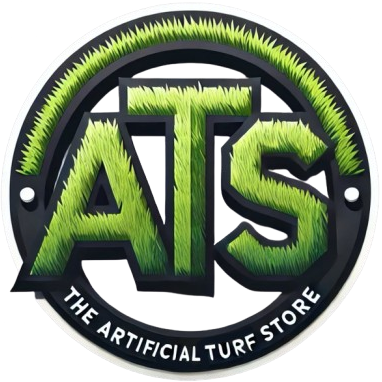The Environmental Impact of Artificial Turf: A Greener Future?
When considering artificial turf, the question often arises: “Is it truly eco-friendly?” While some assume that synthetic grass is inherently harmful to the environment, others express concerns about its recyclability and sustainability compared to natural grass. The truth? Modern artificial turf is far more environmentally responsible than many realize. Let’s explore how synthetic turf measures up and why it may be the greener choice.
💧 1. Water Conservation: Saving Thousands of Gallons Annually
One of the most significant environmental benefits of artificial turf is its capacity for water conservation. Maintaining a natural lawn demands substantial water usage—up to 55 gallons per square foot per year—amounting to thousands of gallons annually to keep grass green and healthy.
By transitioning to artificial turf, homeowners, businesses, and sports facilities can reduce water consumption by as much as 70%, a crucial advantage in drought-prone areas.
💡 By the Numbers:
✔ A typical homeowner can conserve up to 50,000 gallons of water annually by switching to synthetic grass.
✔ Many municipalities now offer rebates to encourage turf installations and promote water-saving initiatives.
Less water waste not only lowers utility bills but also contributes to broader environmental sustainability efforts.
🚫 2. Eliminating Harmful Chemicals and Reducing Pollution
Natural lawns often require the application of fertilizers, herbicides, and pesticides—chemicals that can leach into the soil and contaminate local waterways.
❌ Pesticides & Herbicides: Detrimental to pollinators, wildlife, and pets.
❌ Fertilizers: Contribute to nutrient pollution, leading to harmful algae blooms in lakes and rivers.
❌ Gas-Powered Lawn Equipment: Emits significant carbon pollution, contributing to air quality degradation.
Artificial turf negates the need for these chemicals and equipment, helping preserve local ecosystems.
💡 Environmental Bonus: Eliminating regular mowing reduces air pollution generated by gas-powered lawn tools. According to the EPA, such equipment accounts for 5% of total air pollution in the U.S.
🌿 3. Lowering Carbon Footprints Through Reduced Maintenance
Maintaining a natural lawn involves considerable carbon emissions:
🛠 Weekly mowing, trimming, and edging with fuel-powered equipment.
💦 Frequent watering to combat drying and maintain green color.
🚜 Regular fertilization, aeration, and re-sodding—all requiring energy and resources.
Artificial turf completely removes these demands, significantly reducing the carbon footprint associated with landscape maintenance. Over the lifespan of synthetic grass, the cumulative environmental savings are substantial.
♻️ 4. Longevity and Waste Reduction: Moving Toward Sustainability
Concerns about artificial turf disposal are valid, but innovations in recyclability are transforming its environmental impact.
🔄 Recyclable Turf Materials: Many modern turf products are manufactured with 100% recyclable components, reducing landfill waste.
🏗 Repurposed Applications: Used turf can be repurposed for dog parks, playgrounds, or public spaces, extending its functional lifespan.
⏳ Durability: Unlike natural grass that requires regular reseeding or re-sodding, artificial turf lasts 15–20 years before replacement is necessary.
Products with longer lifespans inherently generate less waste—a significant win for sustainability.
✅ 5. How Does Artificial Turf Compare to Natural Grass?
Factor | Natural Grass 🌱 | Artificial Turf 🌿 |
Water Usage | High 💦 | Low 🚫 |
Chemical Use | Requires fertilizers & pesticides ☠️ | None ❌ |
Carbon Emissions | High (mowers, trimmers, maintenance) 🚜 | Low (no fuel needed) ✅ |
Lifespan | Requires constant upkeep | Durable for 15–20 years ⏳ |
Recyclability | Organic but resource-intensive | New options are fully recyclable ♻️ |
This comparison underscores artificial turf’s ability to conserve water, reduce pollution, and minimize long-term resource consumption.
🌎 Final Thoughts: Is Artificial Turf the Greener Choice?
Artificial turf is no longer just a low-maintenance alternative—it’s an environmentally conscious decision. By significantly cutting down water usage, eliminating chemical dependency, and lowering carbon emissions, synthetic grass is helping pave the way toward a more sustainable future.
If you’re seeking an eco-friendly solution for your home, business, or recreational space, artificial turf may be the perfect fit.
🌱 Ready to Make the Switch? Let’s Talk!
At The Artificial Turf Store, we specialize in eco-friendly, durable turf solutions designed to last while minimizing environmental impact. Our team is ready to help you transform your outdoor space with a greener, more sustainable option.
📞 Call us: (832) 692-5564
📧 Email us: blake@theartificialturfstore.com
📍 Visit us: 7072 US-290, Dripping Springs, TX 78620
✨ Make the switch today and enjoy a greener, worry-free lawn for years to come!
